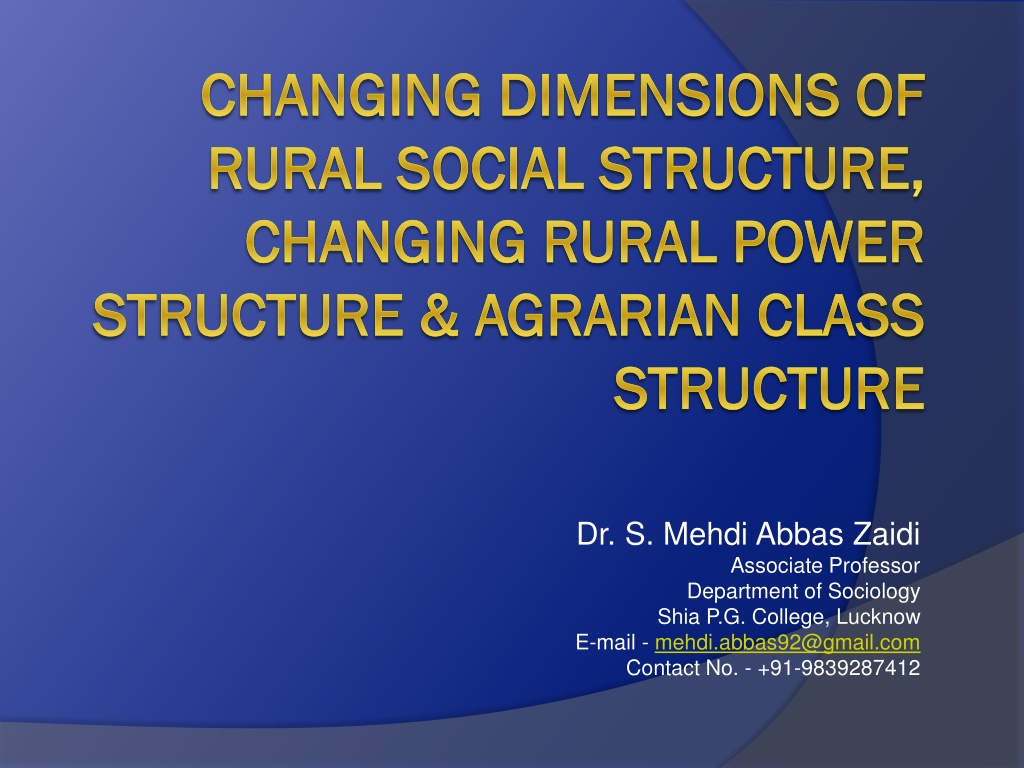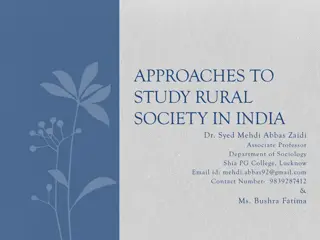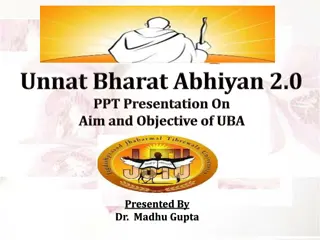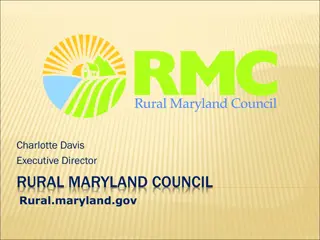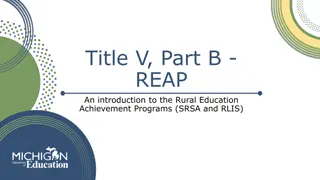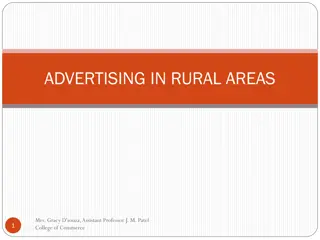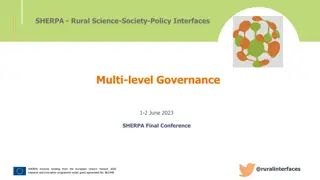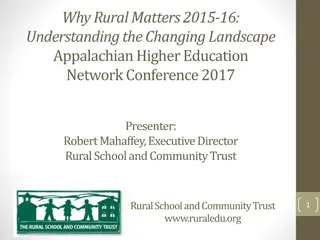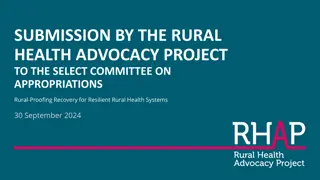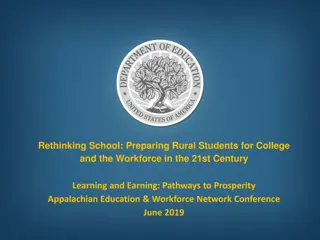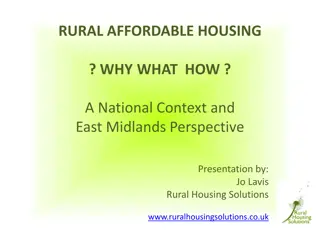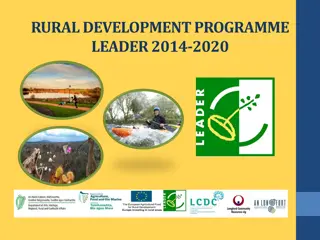Changing Dimensions of Rural Social Structure in India
Rural social institutions in India have deep historical roots, encompassing family, kinship, caste, class, and village structures. This complexity reflects a wide range of social norms, values, roles, and obligations. Changes in the caste system and the practice of jajmani are also highlighted, showcasing how factors like industrialization, urbanization, and education have influenced rural power structures.
Download Presentation

Please find below an Image/Link to download the presentation.
The content on the website is provided AS IS for your information and personal use only. It may not be sold, licensed, or shared on other websites without obtaining consent from the author. Download presentation by click this link. If you encounter any issues during the download, it is possible that the publisher has removed the file from their server.
E N D
Presentation Transcript
CHANGING DIMENSIONS OF CHANGING DIMENSIONS OF RURAL SOCIAL STRUCTURE, RURAL SOCIAL STRUCTURE, CHANGING RURAL POWER CHANGING RURAL POWER STRUCTURE & AGRARIAN CLASS STRUCTURE & AGRARIAN CLASS STRUCTURE STRUCTURE Dr. S. Mehdi Abbas Zaidi Associate Professor Department of Sociology Shia P.G. College, Lucknow E-mail - mehdi.abbas92@gmail.com Contact No. - +91-9839287412
Rural Social Structure in India Rural social institutions in India continue to be family, kinship, caste, class, and village. They have millennia old historical roots and structures. They encompass the entire field of life: social, economic, political and cultural- of the rural people. The complexity of social norms and values, statuses and roles, rights and obligations is reflected in them.
Aspects of Rural Social Structure Caste Jajmani Joint Family Power Structure Agrarian Relations
Changes in the Caste System Studies by historians and sociologists, namely, Romila Thapar (1979), Burton Stein (1968), Ramkrishna Mukherjee (1957), A.R. Desai (1987) and M.N. Srinivas (1969 and 1978) have shown that Indian society was never static. The main traditional avenues of social mobility were Sanskritisation, migration and religious conversion. Occupational association of caste has marginally changed in rural areas.
Continuum Some important changes have taken place in the caste system in rural areas in the contemporary period due to the new forces of industrialisation, urbanisation, politicisation, modern education and legal system, land reforms, development programmes and government policy of positive discrimination in favour of the lower castes. Inter-caste marriage is almost non-existent in rural areas. Inter-caste restrictions on food, drink and smoking continue but to a lesser degree.
Continuum The hold of untouchability has lessened. Caste has acquired an additional role of operating as interest groups and associations in politics with the introduction of representative parliamentary politics. Caste has undergone both the processes of fusion (merging of different castes) and fission (breaking up of a caste into parts) in the arena of politics.
Change in Jajmani The practice of goods for service is gradually losing ground and now-a-days some artisans prefer to get money for their goods. The dominant castes take recourse to politics and hardly seek assistance from the kamins for their support. The landowning castes depend upon market for purchasing qualitative things through cash transaction.
Continuum The crafts of shoe maker, barber and weaver were undermined in the village due to availability of items like shoes, and textiles in the nearby market towns. The jajmans no longer give weightage to occupational monopolies and inherited clienteles. The breakdown of jajman-kamin relationship resulted in the engagement of the kamins in various occupations, other than their traditional ones.
Changes in Family The change taking place in family in India with increasing industrialisation and urbanisation, changes in economy, technology, politics, education and law in modern times. There are two approaches. The first assumes that the family structure in India has undergone the process of unilinear change from the joint to nuclear form as in the West. Secondly, I.P.Desai (1964), S.C. Dube (1955), T.N.Madan (1965), and others argue that it is necessary to observe family as a process.
Continuum They adopt developmental cycle approach to understand changes in the family structure in India. They advocate that the presence of nuclear family households should be viewed as units, which will be growing into joint families when the sons grow up and marry. The developmental cycle approach implies that a family structure keeps expanding, with birth and marriage, and depleting with death and partition in a cyclical order during a period of time.
Change in Power Structure The jagirdari and zamindari systems were abolished and many land reforms were introduced which weakened the traditional power structure and created a new power structure. In place of hereditary and caste leaders, elected persons with political backing became leaders. Individual merit and not caste or class became an important factor in leadership.
Continuum The political parties and panchayati raj institutions changed the leadership patterns in the village. The influence of decentralised decision-making process is seen on rural leadership and the character of the village community power structure. Dominant caste, Rural factionism are also a part of the changed power structure of Rural India.
Continuum Marginal changes of adaptive nature have occurred in power structure and leadership in villages after gaining independence due to various factors e.g. land reforms, panchayati raj, parliamentary politics, development programmes and agrarian movements. Now younger and literate people are found increasingly acquiring leadership role.
Change in Agrarian Relations It led to the decline of feudal and customary types of tenancies. It was replaced by a more exploitative and insecure lease arrangement. It gave rise to a new commercial based rich peasant class who were part owners and part tenants. They had resource and enterprise to carry out commercial agriculture. It led to the decline of feudal landlord class and another class of commercial farmers emerged for whom agriculture was a business. They used the non-customary type of tenancy.
Agrarian Class Structure If we analyze class structure in rural India in post- independence period, we find four classes: the three classes in the agricultural field are of land owners, tenants, and labourers, while the fourth class is of non-agriculturists According to A.R. Desai. Daniel Thorner has analysed agrarian relations by using three specific terms: Malik for agricultural landlords, Kisan for working peasants (including tenants), and Mazdoor for agricultural labourers.
Continuum Daniel Thorner has analysed agrarian social structure in terms of three classes on the basis of three criteria: Income obtained from the soil (i.e., rent, own cultivation, or wages), The nature of rights (i.e., ownership, tenancy, sharecropping and no rights at all), and The extent of fieldwork actually performed (i.e., doing no work, doing partial work, doing total work, and doing work for others).
Continuum D.N. Dhanagre has suggested a different model of agrarian classes. He has proposed five classes: landlords, who derive income primarily from land- ownership by collecting rent from tenants; sub-tenants and share croppers; rich peasants, i.e., small landowners with sufficient land to support the family and who cultivate land themselves, and rich tenants who have substantial holdings and have to pay a nominal rent to their land- lords;
Continuum middle peasants, i.e., landowners of medium size holdings and tenants with substantial holdings and paying higher rent; poor peasants, i.e., (a) Land-owners with holdings insufficient to maintain a family, and therefore forced to rent others land, (b) Tenants with small holdings, (c) Sharecroppers, and (d) Landless labourers.
Continuum Andre Beteille found the following agrarian classes during his Tanjore study: Bhuswami Maalik Kheti karne wale Pattedaar Batayidaar Krishak mazdoor.
Reference Singh V.N. & Singh J., Rural Sociology Lavanya M.M. & Jain S.K., Rural Sociology
Thank You Thank You
